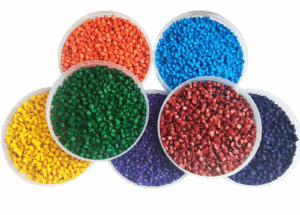
Your kidneys work tirelessly to keep your body in balance, filtering waste and maintaining essential functions. But how often do you think about protecting these vital organs? For patients at risk of renal complications, early detection is key, and that’s where renal safety screening tools come into play. These tools are designed to identify potential issues before they escalate, offering healthcare professionals a proactive way to safeguard kidney health.
With advancements in medical technology, screening tools have become more precise and accessible, allowing for better monitoring and personalised care. Whether you’re a clinician aiming to enhance patient outcomes or someone keen to understand the importance of kidney health, knowing how these tools work can make all the difference. Understanding their role isn’t just about prevention—it’s about empowering you with the knowledge to make informed decisions.
Importance Of Renal Safety Screening Tools
Renal safety screening tools play a vital role in safeguarding your kidney health. These tools let you detect early signs of renal dysfunction, offering opportunities for timely intervention. Their value lies in helping healthcare providers assess risks, monitor progress, and tailor treatments to your needs. Without such tools, identifying potential kidney issues early may be difficult, leading to delayed care when it’s needed most.
When you look at high-risk groups, like individuals with diabetes or hypertension, the importance of these tools becomes even clearer. Conditions placing strain on your kidneys often develop silently, gradually impacting their function. Here, precise assessments from screening tools mean you can take preventive actions. Tests measuring creatinine levels or glomerular filtration rate (GFR) provide insights into how well your kidneys filter waste, shedding light on their overall health.
Healthcare professionals may also use these tools to monitor the impact of medications on kidney function. Drugs prescribed for other conditions can sometimes affect the kidneys, especially if chronic use is necessary. With renal safety screening, clinicians can track changes in markers like proteinuria or blood urea nitrogen, ensuring your treatment plan keeps renal risks in check.
Are these tools for you only when symptoms arise? Absolutely not. Screening tools offer utility even for asymptomatic individuals, particularly in routine health evaluations or during major medical treatments like chemotherapy. You may find that screening becomes an essential step in protecting kidney function before complications arise. Regular monitoring builds continuity, allowing your medical history to guide decisions in future care.
In broader healthcare systems, renal safety tools support population health by identifying patterns of kidney disease in communities. Data-driven insights enable planning for better resources, enhanced treatment access, and prevention programmes. For individual and collective well-being, this technological advancement ensures no detail is overlooked across the spectrum of kidney care.
Key Features To Look For
Renal safety screening tools differ in effectiveness and application, but some features significantly enhance their value. When exploring these tools, you will find that certain characteristics ensure accuracy, ease of use, and accessibility.
Accuracy And Reliability
Effective screening tools should provide precise and consistent results. By focusing on parameters like eGFR or creatinine measurements, these tools can reflect real-time kidney function. Fluctuations in test results may reduce trust in the findings, impacting clinical decision-making. In the case that a tool integrates auto-calibration or advanced algorithms, you may notice it minimises human error, leading to dependable outputs. Without accuracy, your ability to identify renal risks early diminishes significantly.
User-Friendliness
A user-oriented design simplifies interactions for both healthcare teams and patients. You might encounter tools combining clear instructions with intuitive workflows, reducing training demands. Portable designs or digital platforms can also enhance usability, especially for frequent renal monitoring. For patients, features like easy-to-interpret outputs or multilingual support improve comprehensibility. You will find that tools with well-thought-out interfaces often enable quicker decision-making in clinical settings.
Accessibility And Cost
Affordability ensures broader adoption and utility across diverse populations. In resource-limited settings, cost-effective tools can close diagnostic gaps. Portable or point-of-care devices allow flexibility in rural or community practices. Subsidies or insurance coverage may also address financial barriers in the case that costly equipment imposes restrictions. Accessibility goes beyond affordability—efforts in equitable distribution amplify the impact of these tools on community health.
Challenges And Limitations
Renal safety screening tools, while advanced, come with certain hurdles you’ll need to figure out. Diagnostic accuracy, for one, can sometimes be compromised. External factors like hydration levels, medications, or acute illnesses might skew results, leading to misinterpretation. You might rely on these tools, but real-time human insights remain critical. Can baseline variances be accounted for during patient evaluations? It’s a question worth considering.
Accessibility also creates barriers in many contexts. You’ll find tools can appear plentiful in urban medical centres, yet rural areas or underserved regions might face shortages. This can hinder early detection efforts, particularly for at-risk populations who might already experience healthcare disparities. Even with global advancements, unequal distribution often limits who can truly benefit.
Data integration often poses another significant obstacle. Are your systems interconnected enough to ensure seamless result-sharing among teams? When platforms fail to communicate effectively, you risk delays in decision-making or fragmented follow-ups. Precision, dependent on clear collaboration, becomes harder to achieve across disconnected settings.
You might also need to address issues with the cost of widespread implementation. While technology progresses, affordability can present setbacks, especially for smaller clinics or independent practices. Budget constraints sometimes make you question whether such tools can be effectively scaled across less-resourceful medical establishments.
In highly variable cases, specificity versus sensitivity becomes problematic. You might notice tools adapted for general use occasionally struggle with borderline results, making nuanced interpretation harder without experience. Commit to understanding test limitations to better weigh outcomes when unusual data surfaces.
Lastly, over-reliance can lead to reduced clinical judgement. Consistently depending on automated outputs may inadvertently distance practitioners from recognising subtleties only human expertise can detect. Performance metrics are critical, but blending technology with actively honed skills elevates patient outcomes. If left unconsidered, such pitfalls diminish the promise tools initially offer.
Future Developments In Renal Safety Screening
Advancements in renal safety screening focus on improving accuracy and accessibility while incorporating innovative technologies. You will find breakthroughs prioritising personalised diagnostics and integrated data analysis.
Renal Transporter Assays
Renal transporter assays evaluate kidney drug handling through key protein interactions. They highlight transporter-mediated drug uptake and excretion, helping predict medication effects. Healthcare teams might use these assays for early identification of nephrotoxic risks or drug-drug interactions. Biomarkers like OCT2 or MATE1 often guide these studies, offering clinical insight into kidney function under medication influence. By using this data, your treatment plans can consider renal capacity more effectively, especially in vulnerable populations.
In Closing
Renal safety screening tools represent a pivotal step forward in safeguarding kidney health and enhancing patient care. By leveraging these tools, you can proactively address potential risks, support early interventions, and contribute to better health outcomes for at-risk populations.
While these tools offer immense potential, understanding their capabilities and limitations allows you to maximise their benefits effectively. By staying informed and embracing advancements, you can play a crucial role in fostering comprehensive kidney care and improving quality of life for individuals and communities alike.



